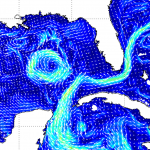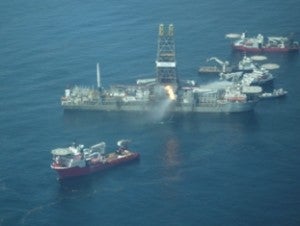When the Deepwater Horizon drilling rig exploded on April 20, killing 11 people and injuring 17 others, it began a massive disgorgement of oil. A full two months later, the oil continues to surge into the Gulf of Mexico at a rate that BP estimates of up to 100,000 barrels per day.
This disaster was and continues to be no ordinary oil “spill” or “leak.” A “spill” is something that happens on your kitchen floor and is easily mopped up and dried, or when a ship wrecks and dumps a certain amount of oil. A “leak” is what happens under your bathroom sink, remedied with some duct tape or at worst, a call to the local plumber. A “leak” may also be small amounts of oil that trickle from underwater oil pipelines.
What is happening in the Gulf is nothing short of catastrophic. An ecological “game-changer.”
Current estimates place the amount of oil that has flooded into the Gulf at more than 100 million gallons to date, and perhaps three times that amount – a staggering figure that makes the Exxon Valdez disaster (a total of 11 million gallons of crude) pale in comparison. Until now, the Valdez “spill” was widely known as the largest in U.S. history. By the time the flow is stopped, the catastrophe in the Gulf may well constitute the largest oil disaster in the hemisphere, and perhaps the world.
 |  |
| The evolution of the Gulf Loop Current from a strong downstream delivery phase on May 7 to a cutoff eddy phase on June 11, temporarily detaining oil pollution. Credit: NWS. | |
The endlessly expanding oil slick – which continues to spread far beyond the immediate area of the well, propelled by the Gulf Loop Current – covers thousands of square miles and has created underwater plumes that have proven exceedingly difficult to measure, let alone contain.
Large amounts of oil have been sucked into the large eddy that formed from the northern part of the Loop Current, fated to drift northwestward towards Texas. Only the chance development of this eddy on June 1 prevented oil pollution from reaching as far downcurrent as northern Cuba, Florida and beyond.
Only time will tell the final measure of this catastrophic blowout, and its lasting damage to wildlife, the Gulf environment, fisheries and the regional and national economies.
But this much we can say: Characterizing what’s happening in the Gulf as a “spill” is like calling Hurricane Katrina a “shower.”
Never miss a post! Subscribe to EDFish via a email or a feed reader.










